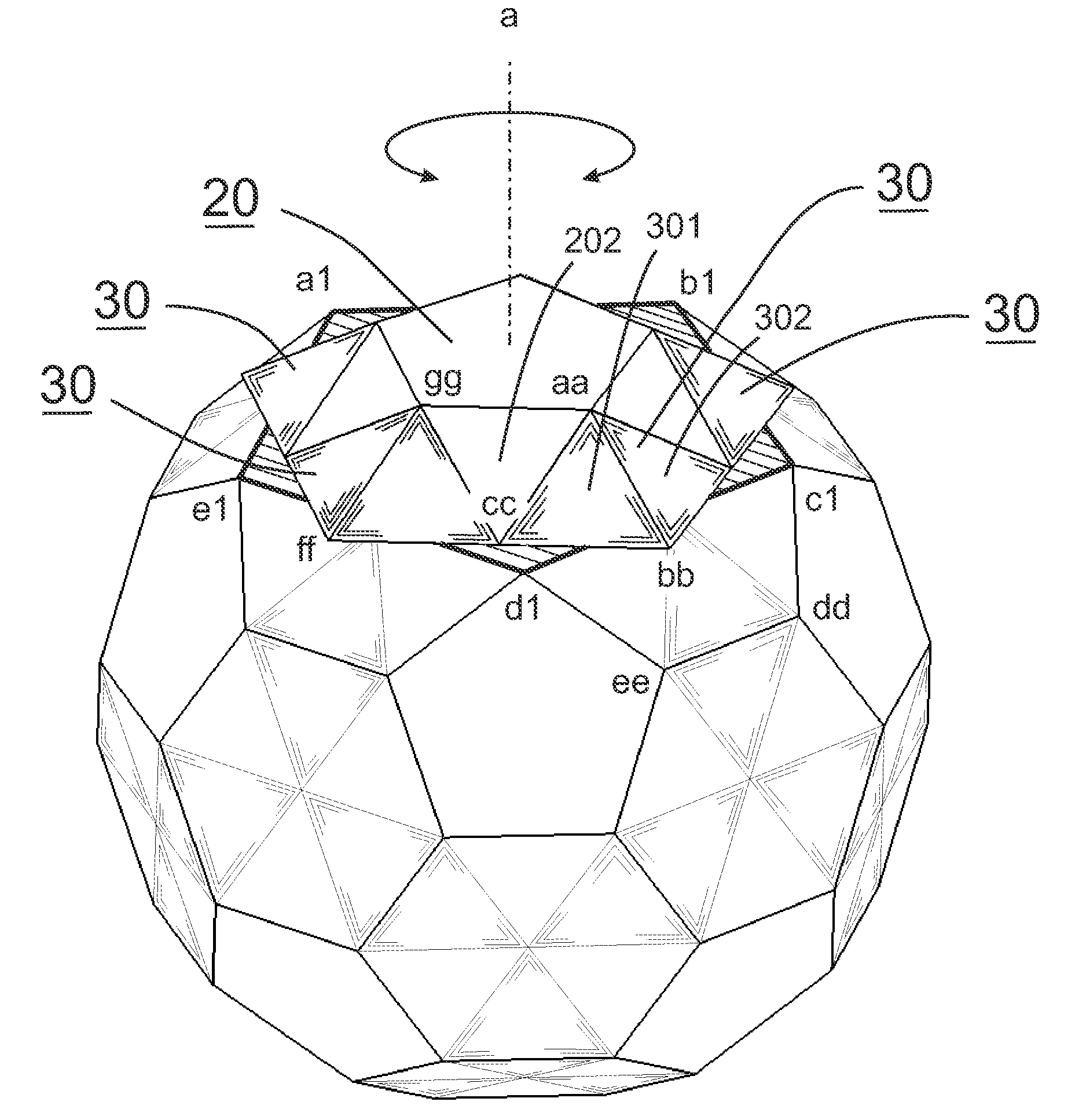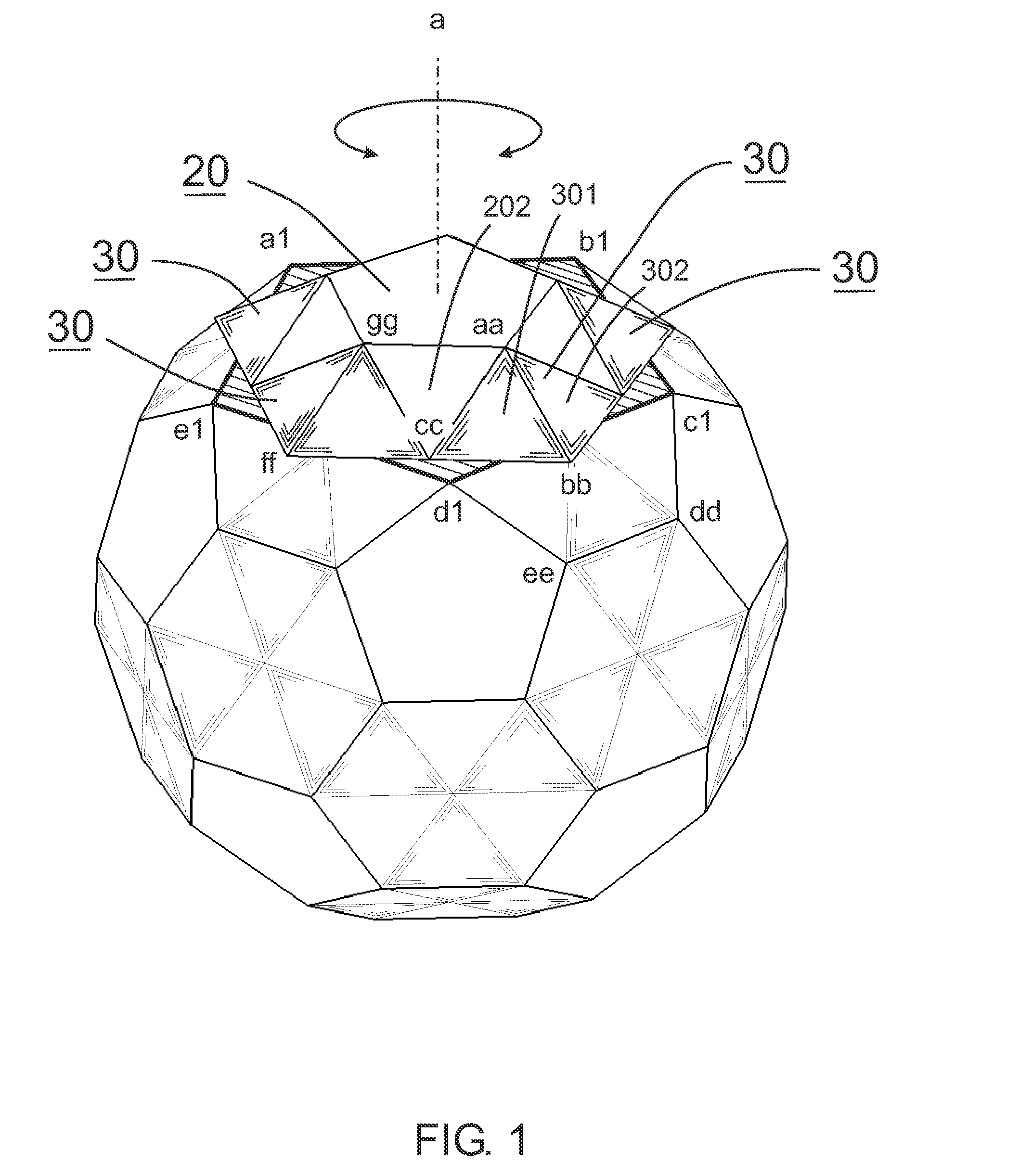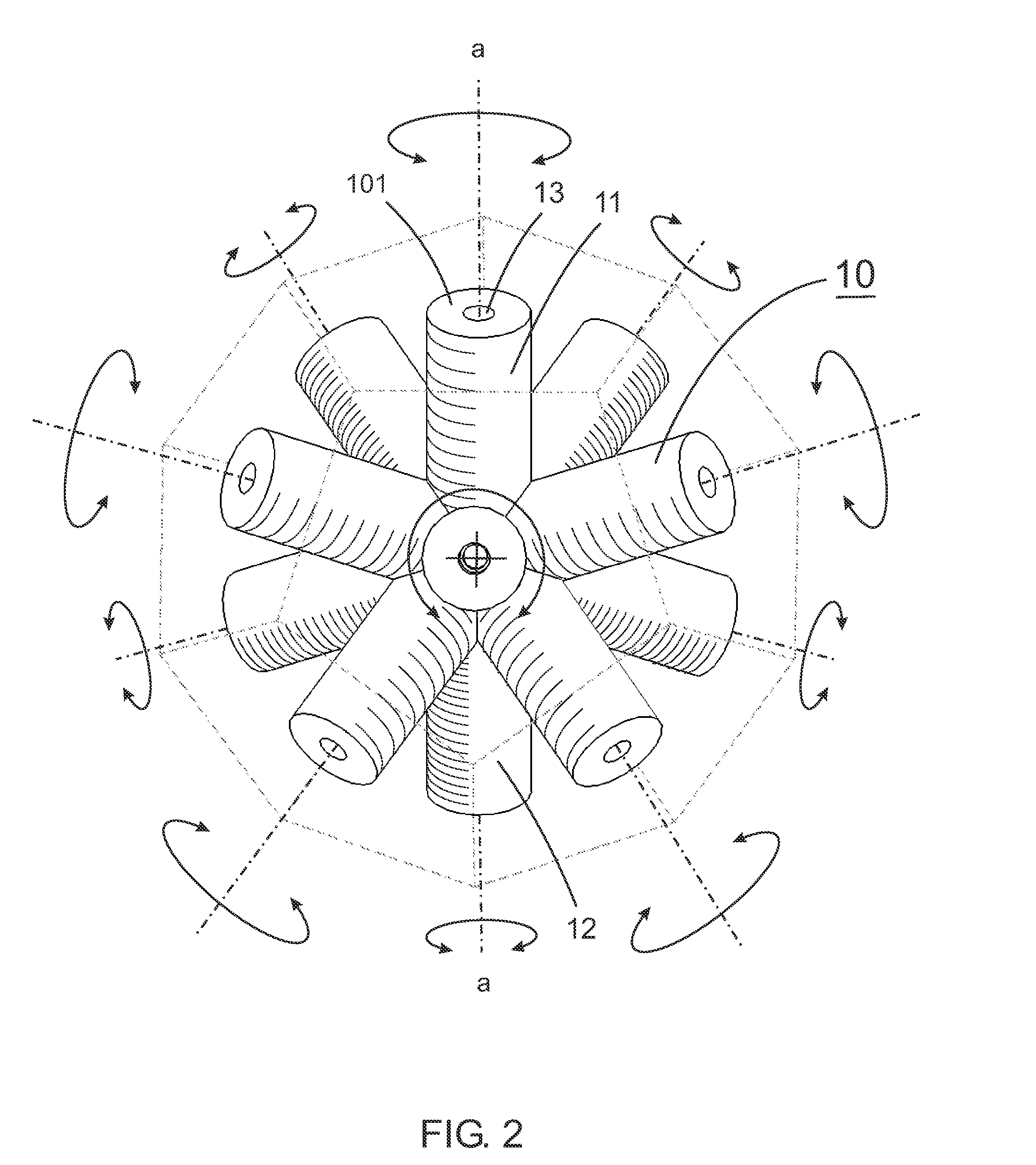Three-dimensional logical puzzles
a three-dimensional, logical technology, applied in indoor games, sports equipment, etc., can solve the problem that none of the semi-regular or irregular polyhedron-based puzzles known in the art enable both rotating/shifting movemen
- Summary
- Abstract
- Description
- Claims
- Application Information
AI Technical Summary
Benefits of technology
Problems solved by technology
Method used
Image
Examples
embodiment 1
Buckyball Puzzle
[0057]The first preferred embodiment is shown in FIG. 1 to FIG. 8.
[0058]Reference is now made to FIG. 1. The guiding polyhedron used to create this three-dimensional logical puzzle is a semiregular Buckyball polyhedron having twelve pentagonal and twenty hexagonal faces. Bisecting planes such as a1-b1-c1-d1-e1 that are parallel to each pentagonal face are used to divide the polyhedron. Each hexagonal face such as aa-bb-dd-ee-ff-gg with geometrical center cc is bisected. This dividing method results in three types of elements: (i) a concealed center element, (ii) twelve rotating elements 20, (iii) thirty mobile elements 30. Each mobile element 30 is connected to the puzzle by a retaining means, i.e. a fastener, fastener subassembly, retainer or other retaining mechanism that enables elements to be interchanged from one group to another group by “shifting” (i.e. twisting or rotating) one group relative to the other groups. For the purposes of nomenclature, a “group” in...
embodiment 2
Sliding Buckyball Puzzle
[0067]FIG. 9 to FIG. 13 illustrate a second preferred embodiment of the invention, which is a three-dimensional logical puzzle also based on a Buckyball polyhedron. In addition to the rotational “shifting” movement described with regard to the first embodiment (i.e. rotation of rotating elements with their associated groups of mobile elements), this second embodiment also provides for rotational “sliding” movement (i.e. rotation of clusters of superimposed elements that slide in grooves formed in the underlying mobile elements and rotating elements of the puzzle).
[0068]Reference is now made to FIG. 9 showing a partial cross-sectional view of a rotating element 20′ that is similar to the rotating element 20 but further incorporating an arcuate groove 25 on each triangular aa-cc-gg face 202 centered on every vertex cc. In this preferred embodiment the groove is dovetail-shaped 26. It is understood that this groove could be male (protrusion) or female (cavity), ...
embodiment 3
erical Puzzle
[0088]The third preferred embodiment is shown in FIG. 18 to FIG. 21.
[0089]Reference is now made to FIG. 18. The illustrated spherical rotating element 120 is obtained with the same dividing method as previously mentioned except that the divided polyhedron is now replaced by a sphere with its radius selected to be coincident with vertex aa and gg of FIG. 3. The spherical rotating element 120 is shaped like a convex pentagon with a protrusion 121 performing the same function as the protrusion 21 of the rotating element 20 shown in FIG. 3. The protrusion 121 is provided with a holding means (not shown) for holding pivotally the rotating element 120 on a half center core element 110. This holding means is situated at the geometrical center of the protrusion 121 and is intended to be pivotally retained from within the puzzle without passing through the outer surface 1201 of the spherical rotating element 120. With suitable modification, the spherical rotating element 120 cou...
PUM
 Login to View More
Login to View More Abstract
Description
Claims
Application Information
 Login to View More
Login to View More - R&D
- Intellectual Property
- Life Sciences
- Materials
- Tech Scout
- Unparalleled Data Quality
- Higher Quality Content
- 60% Fewer Hallucinations
Browse by: Latest US Patents, China's latest patents, Technical Efficacy Thesaurus, Application Domain, Technology Topic, Popular Technical Reports.
© 2025 PatSnap. All rights reserved.Legal|Privacy policy|Modern Slavery Act Transparency Statement|Sitemap|About US| Contact US: help@patsnap.com



